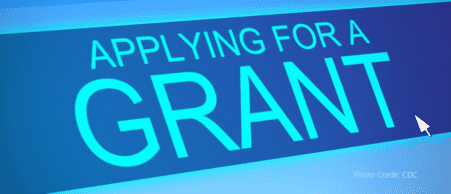Grants can be a tremendous tool for nonprofits and businesses to grow their programming and services. Who doesn’t like (nearly!) free money?
Writing a grant is more of an art than a science, but if you’re new to grants and aren’t sure where to begin, my tips below will put you on the right track!

Step 1: Research
First things first: you need to find the grant and make sure it’s a good match for your organization or the specific program you’re funding. For first-time grant seekers, you can start with a web search for terms such as “grant funding small business” or “grants human services”, depending on your mission and goals. You can narrow down your results even further by including your city, state, or region.
For those who’ve applied for a few grants and are feeling pretty comfortable, there are a number of database options, such as Foundation Directory or iWave, that provide find more detailed information on funders, most of which include easy access to 990s, contact info, and a history of who they’ve funded in the past. These databases often have paywalls, but it may be worth the cost if you want to set up a regular stream of grant income.
Step 2: Writing
So, you’ve found a good grant match and now you need to actually write the thing. Welcome to the tricky part! How do you convince them to fund you? How long is too long? How do you convey the urgency of your request? Fortunately (or unfortunately), there is no set formula to writing grants, and it’s a very flexible medium. I prefer to format grants in a letter-style template, but you can write it as more of a Q&A-style format as well. The important thing is to be concise, but explicit with details. Give the funder the information they need to make an informed decision, but don’t overwhelm them with every single tiny detail.
The good news is, online applications have taken out a lot of the guesswork. Many larger funders use online grant portals with specific questions they want answered and word/character limits so you know how much is too much!
Step 3: Attachments
Poor attachments! They get so little love, but are a critical final step before submitting an application. Double check that you’ve included all the requested attachments before submitting your final draft. If there are no attachments listed, I recommend including your 501(c)3 letter (for nonprofits), your organization’s current year budget, and a copy of your Board of Directors list along with their affiliations.

I could write a thesis on how to apply for grants and all the possible permutations of questions, attachments, and requirements, but these tips will give you a solid foundation of the main points you’ll come across again and again.

Kaitlyn is a grant writer and development consultant in the DC area. Her firm, K. Maloney Consulting, offers grant writing and development assistance to nonprofits across the country. She started grant writing because it was a tangible way to make a difference for the nonprofit organizations she works with. If you’re looking for grant help or just want to say ‘hi’, you can find her online at www.kmaloneyconsulting.com, or reach her at kaitlyn@kmaloneyconsulting.com
